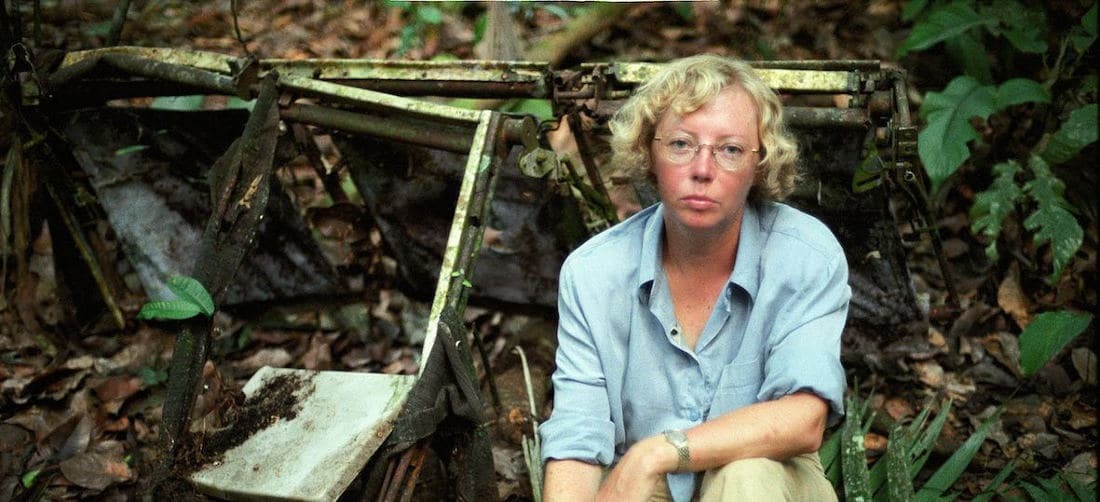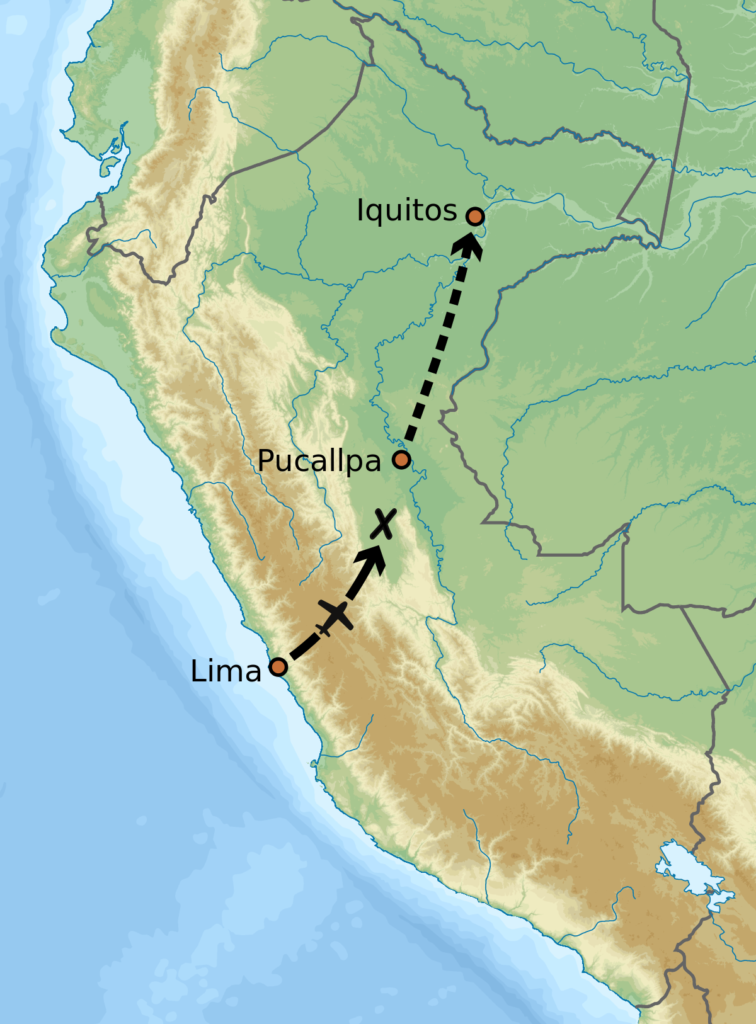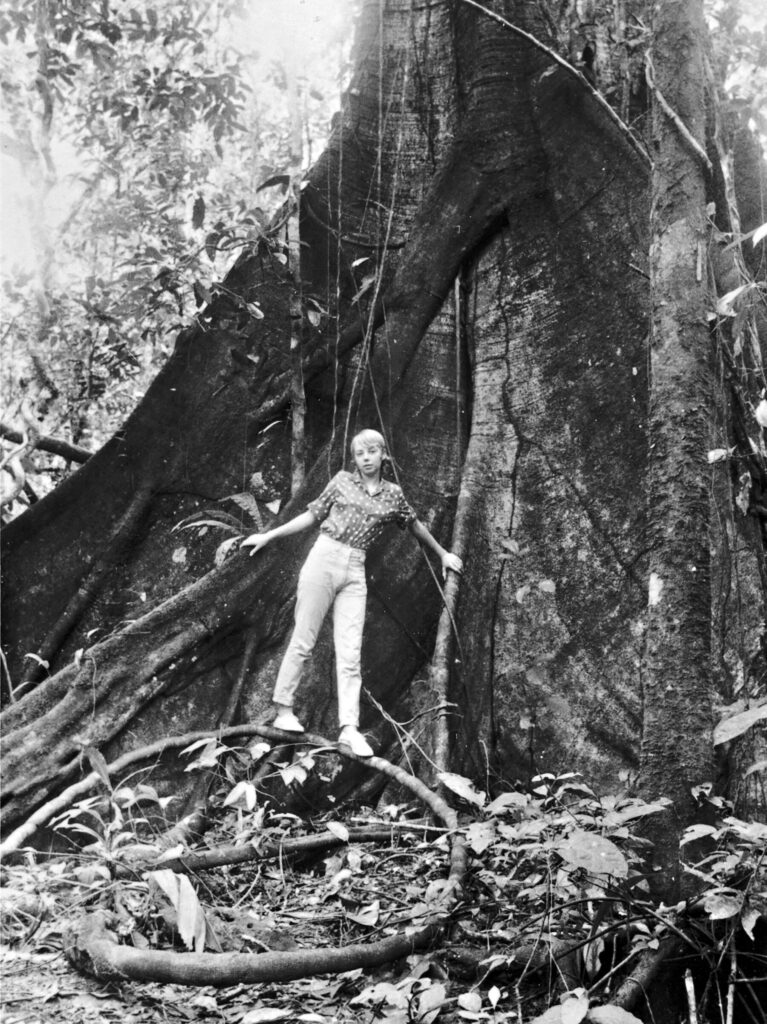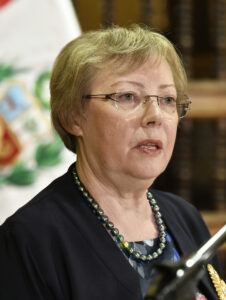The Woman Who Fell From the Sky and Lived (REBROADCAST of Episode 44)
Originally released July 5, 2021. In 1971, Juliane Koepcke’s airplane was struck by lightning and broke apart 2 miles above the Peruvian Jungle. Miraculously, she was the only one out of the 92 people onboard to survive. In this episode, we tell the amazing story of how she survived the crash and her journey to find safety.

In 1968, German biologists Maria and Hans-Wilhelm Koepcke bought an abandoned cabin in a lowland rain forest in Peru. It was at the western foothill of the El Sira mountain range and their purpose in buying the cabin was to establish a new research station to study the local flora and fauna. They had worked for the Museum of Natural History in Lima and had decided to embark on what was only meant to be a 5 year mission at the research station, which they named Panguana. It was there that Maria and Hans-Wilhelm’s 14 year old daughter Juliane got an unusual education.
Instead of being in school in the bustling city of Lima, she was homeschooled in this Amazon rain forest research station. She would go out with her parents on their many trips into the wild. She learned things that a 14 year old girl normally doesn’t get to learn – How to identify various types of insects, plants and animals in the rain forest. And how to survive among them. Even though this education was great for her, the school back in Lima eventually said she had to return. And so she went back to the city to finish high school.
When Juliane was 17, her mother had the idea to fly Juliane back to Panguana to visit her father for Christmas. Maria returned to Lima to pick up her daughter and the two of them would fly together. The plan was to fly from Lima to the small Iquitos airport on the 19th or 20th of December, but young Juliane was about to graduate high school. She wanted to attend her graduation ceremony and a dance and leave after that. So the two were forced to fly out on Christmas Eve, December 24th, 1971. And the only airline that they could book was LANSA – that stood for Lineas Aéreas Nacionales Sociedad Anonima – a struggling Peruvian airline with a poor reputation. Hans-Wilhelm protested the decision to fly with LANSA, but it was all that was available.

At noon on December 24th, LANSA Flight 508, a Lockheed L188A Electra Turboprop carrying 86 passengers took off from Lima’s Jorge Chavez International Airport. The final destination of the flight was Iquitos, Peru, with a scheduled stop happening at Pucullpa. But the airplane would never arrive.
It was December 24th, 1971. 17 year old Juliane and her mother Maria Koepcke were on board LANSA flight 508 and it had just taken off for Pucullpa, Peru. The first half of the flight was relatively smooth, but as the flight with 86 passengers and six crew members flew over the Puerto Inca province, it encountered severe turbulence and heavy thunderstorms at 21,000 feet.

The plane shuddered, dipped, dropped and bounced in the horrible storm. Items were thrown around the cabin and the passengers began to scream. Suddenly, a bolt of lightning…
The lightning struck the right wing of the L188A and ignited the fuel tank, blowing a hole in the aircraft. When Maria exclaimed “That’s it. Now it’s all over,” it would be the last words that Juliane would hear her mother say.
The plane fell from an altitude of 9,843 feet. As the plane broke apart, Juliane’s seat stayed connected in a row of three, which may have helped to slow it down during its descent. It fell through tall trees, further slowing her down. When she came to a stop in the mud, still strapped to her seat, she had suffered a broken collarbone, and gashes to her left leg and right arm. Her right eye was swollen completely shut. But somehow, despite falling nearly 2 miles from the sky – she was alive. For the next day and a half, she laid there, fading in and out of consciousness until she gained enough strength to start moving around and begin looking for her mother, who had been seated right next to her. She couldn’t find her.
Not being able to find her mother, and suffering from wounds on her body, she made the decision to start trying to find help. She had one sandal left from the crash and would throw it ahead of herself to scare off any dangerous animals that might be in front of her. She stumbled upon a small creek and began following the water. It led to a bigger creek, and eventually to a river. She remembered something her dad had taught her in her days at Panguana. Following a river downstream will always lead to civilization. So downstream she headed.
She lived by drinking rain water off of leaves and a bag of candy she had found in the plane’s wreckage. Her wounds began to become infected and infested with bugs and larva. She continued on, even after she ate the last piece of candy from the bag. Her watch had stopped working. At one point, she came across an empty boat on the river, but no one was around it. She passed the boat to find a path to a small hut. That’s where she found temporary shelter and a gas can. Despite the stinging pain, she poured the gas on her wounds and disinfect them. Or at the very least, to clean them of infestation. Juliane had no idea of how many days it had been. She used that small hut for shelter for the next day and a half.

As the sun started to set the following evening, she heard voices approaching the cabin. It was three Peruvian fishermen who discovered her laying in the hut. They were amazed. This white girl in the middle of the rain forest appeared from nowhere. They brought her to the nearest village. The nearest village had a pilot who flew the 17 year old to Pucullpa where she was taken to a hospital and reunited with her father. Julianne had been walking through the rain forest of Peru by herself for 11 days.
She was the only survivor out of 92 people on board LANSA flight 508. Her mother’s body was found 2 weeks later.
There were many investigations and inquiries into why the plane crashed. Examining the wreckage showed that the plane was mostly made up of spare parts. LANSA had a poor safety record to begin with. And it’s thought that the pilots felt pressure to push through the hazardous weather conditions because of the holiday. LANSA was stripped of their operating authority. They never flew another flight after the crash.

Experts aren’t entirely sure how Juliane survived the almost 10,000 foot fall to earth. As I said earlier, one of their theories is that her row of seats stayed together and may have acted as sort of a parachute to slow her rate of descent. They also believe that falling onto a tall tree allowed her impact to be lessened by breaking through so many branches on the way down.
Julianna’s story has been made into several books and movies, most notably the film “Wings of Flight” by director Verner Hertzog, who was interested in the story because he was originally scheduled to be flying on LANSA flight 508 that day.
As for Juliane, she honors the life of her mother through a long and successful career as a biologist. She’s currently the director of a thriving research station that’s now grown into a small camp responsible for publishing more than 180 biology research papers. She’s the director of Panguana – the very place her parents founded and the place that taught her how to survive.
Review this podcast at https://podcasts.apple.com/us/podcast/the-internet-says-it-s-true/id1530853589
Bonus episodes and content available at http://Patreon.com/MichaelKent
For special discounts and links to our sponsors, visit http://theinternetsaysitstrue.com/deals

